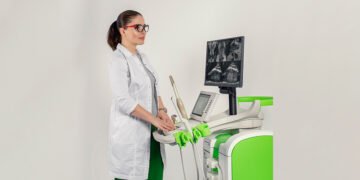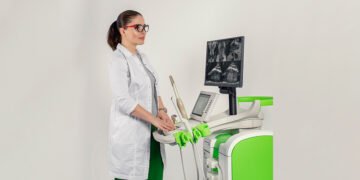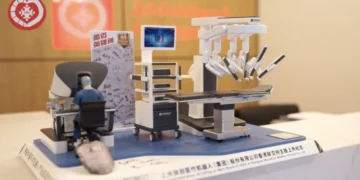Treatment of kidney cancer with modern, minimally invasive laparoscopic methods at the Karazanashvili Robotic Center Laparoscopic Center. This method represents the modern global standard for treating stage I and II kidney cancer, and its advantages include:
- Less invasiveness
- Rapid rehabilitation – the patient does not require special care, bed rest, or limitations on physical activity
- No postoperative complications (e.g., hernia, healing issues, etc.)
- Surgery under video control
- Shorter hospital stay
Why is the laparoscopic method considered the global standard? Why is it not always necessary to perform surgery through open surgery?
Kidney surgery is primarily distinguished by the traumatic nature of the incision. The incision is very long, and due to cutting through the thick muscular layer, even when the healing process is properly managed, significant cosmetic problems arise. The scar is rough, and often muscle innervation is disrupted, causing the muscles to become flaccid and lose their shape, sometimes even bulging out like a hernia. The postoperative period is usually associated with significant pain, and the rehabilitation process is lengthy and involves many challenges. Therefore, the minimally invasive (i.e., minimal intervention) laparoscopic method is of great importance.
According to modern guidelines (so-called ‘guidelines’), the treatment of stage I and II kidney cancer is recommended to be performed using the laparoscopic method, in contrast to stage III and IV cancers, where very complex surgical intervention is required. This is because the tumor is sometimes grown into neighboring organs. For example, a tumor in the right kidney may be grown into the liver, left kidney cancer may spread to the pancreas, or it may be attached to the spleen. Additionally, a cancerous thrombus may extend into the inferior vena cava, among other possibilities.
What does the laparoscopic method imply, and how is it used at Karazanashvili Robotic Center?
Laparoscopy, in general, is a modern surgical method in which surgery on internal organs is performed through a small (0.5–1.5 cm) incision made in the abdominal wall, using a special instrument called a laparoscope.
At Professor Guram Karazanashvili’s Urological Hub, kidney cancer is treated, as well as heminephrectomies (partial kidney removal) and nephrectomies (complete kidney removal), using a transabdominal approach (i.e., through the abdominal cavity), in accordance with global standards, with modern laparoscopic techniques. The transabdominal approach to the kidney (through the abdominal cavity) is more convenient, allowing for broader manipulation. During kidney laparoscopy, it is important to consider the orientation lines, and there are two approaches for organ mobilization and isolation. The surgeon can either directly access the blood vessels, first ligating them and then isolating the affected kidney, or, for better orientation and access to the organ, follow the ureter.
At Karazanashvili Robotic Center, in cases of kidney cancer pathology, the blood vessels are first mobilized, and then they are ligated using special clamps (which have minimal risk of slippage). Afterward, the affected kidney is isolated. From an oncological perspective, this approach is mandatory, as if the vein is not pre-ligated, cancerous cells may spread throughout the body via the bloodstream during the removal of the kidney.
In cases of non-cancerous kidney diseases, such as cysts or hydronephrosis, the surgeon follows the ureter to reach the kidney, carefully maneuvering as they move towards the renal hilum. This process requires caution, as the anatomical layers are often disrupted due to chronic inflammatory processes (such as recurrent pyelonephritis), leading to adhesions, making organ mobilization and isolation more challenging.
It is essential to consider all of these nuances, which only highly qualified specialists can manage. The specialists at the Karazanashvili Robotic Center Laparoscopic Center use laparoscopic treatment methods that meet global medical standards in urology, gynecology, and abdominal surgery. The center also performs combined surgeries in urogynecology and urological surgery.







